#estonian maritime museum
Explore tagged Tumblr posts
Photo

Paks Margareeta (Fat Margaret) tower in Tallinn, Estonia, December 5, 2022. Photo by D.P.
Nowadays, the tower is home to Estonian Maritime Museum
#Estonia#Tallinn#Fat Margaret#european history#street photography#defense of europe#fortress#medieval city#Baltic States#original photography on tumblr#Northern Europe#tower#winter#estonian maritime museum#free world
50 notes
·
View notes
Text
That was delicious. The eggs were cooked perfectly, just the way I like them (with crispy bottom and runny yolk, while the top was also cooked). Even the green beans were very tasty (there was garlic and probably some oil in them).
I’ll finish my coffee, then probably go to a grocery store. My hotel check-in isn’t until 2 pm, but I don’t think I’ll do much before that. I’m planning to visit Eesti Meremuuseum (Estonian maritime museum) today.
1 note
·
View note
Text
Tallinn
Tallinn was a pleasant surprise, more enjoyable perhaps than Helsinki, from where I caught a ferry across the Baltic Sea to Estonia. Tallinn is by far the largest city in Estonia, but it is a small country. It had a lovely old town but the new town was also surprisingly attractive in places, and home to two incredible museums. Lennusadam is part of the Estonian Maritime Museum, and is probably…

View On WordPress
#Alexander Nevsky Cathedral#Danish King&039;s Garden#Estonia#Great Coastal Gate#Kohtuotsa viewing area platform#Lennusadam#Long Leg Gate Tower#Maarjamäe Castle Estonian History Museum#Patkuli viewing platform#photography#Piiskopi viewing platform#St Mary&039;s Cathedral#St Olaf&039;s Church#St. Nicholas Church and Museum#Tallinn#Tallinn City Hall#Toompea Castle#travel#Viru Gates
0 notes
Text
If you are thinking of traveling to Tallin, Estonia, you are in the right place. Tallinn is the capital city of Estonia and it is a popular destination for tourists. Here are some ideas for things to see and do in Tallinn: Visit the Old Town: Tallinn's Old Town is a UNESCO World Heritage site and it is filled with medieval charm. It is home to many landmarks, including the Town Hall Square, St. Nicholas Church, and the Alexander Nevsky Cathedral. Take a walking tour: There are many guided walking tours available in Tallinn that will take you around the city and introduce you to its history and culture. Explore the Kadriorg Palace: The Kadriorg Palace is a beautiful Baroque palace that was built for Catherine I of Russia. It is now home to the Estonian Art Museum. Visit the Tallinn TV Tower: The Tallinn TV Tower is a popular attraction that offers panoramic views of the city. You can also enjoy a meal at the rotating restaurant at the top of the tower. Shop at the Balti Jaam Market: The Balti Jaam Market is a popular spot for tourists and locals alike. It is a great place to find souvenirs, try local food, and meet the locals. Take a day trip to the Lahemaa National Park: Located about an hour's drive from Tallinn, the Lahemaa National Park is a beautiful place to spend the day. You can hike or bike through the park, visit a manor house, or relax on the beach. Where to Stay in Tallinn, Estonia? There are many options for places to stay in Tallinn, Estonia. Here are a few ideas: Hotels: Tallinn has a range of hotels to suit different budgets and preferences. Some popular options include the Hotel Schlossle, the Hotel Palace, and the Radisson Blu Sky Hotel. Bed and breakfasts: For a more intimate and homely experience, you might consider staying at a bed and breakfast. There are many B&Bs to choose from in Tallinn, such as the Old House B&B and the Telegraaf Hotel. Apartments: Renting an apartment can be a good option if you want more space and independence. There are many apartments available for short-term rentals in Tallinn, such as the Old Town Apartments and the Tallinn City Apartments. Hostels: If you are traveling on a budget, you might consider staying at a hostel. There are several hostels in Tallinn, including the Hostel Mundo and the Hostel St. Olav. When choosing where to stay in Tallinn, consider your budget and what type of accommodation will best suit your needs. When to Go to Tallinn, Estonia Let us share with you some of the things you need to know when traveling to Estonia. The best time to visit Tallinn, Estonia depends on your personal preferences and what you want to do while you are there. Here are a few things to consider when deciding when to go: Weather: Tallinn has a temperate maritime climate with relatively mild winters and cool summers. The average temperature in the summer is around 20°C (68°F) and in the winter it is around -4°C (25°F). If you want to enjoy warm weather and outdoor activities, the summer months of June, July, and August might be the best time to visit. Festivals and events: Tallinn has a number of festivals and events throughout the year, so you might want to plan your trip around one of these. Some popular events include the Tallinn Music Week in March, the Tallinn Food Festival in August, and the Tallinn Black Nights Film Festival in November. Crowds: Tallinn is a popular destination for tourists, so the city can get quite crowded during the peak tourist season. If you want to avoid the crowds, you might consider visiting during the shoulder season (May, September, and October). Overall, the best time to visit Tallinn will depend on your personal preferences and what you want to get out of your trip. How to Stay Safe in Tallinn? Tallinn is generally a safe city for tourists, but it is always a good idea to take precautions to ensure that your trip is enjoyable and problem-free. Here are a few tips for staying safe in Tallinn:
Be aware of your surroundings: As in any city, it is important to stay alert and aware of your surroundings. Be particularly cautious in crowded areas and at night. Keep valuables safe: Avoid carrying large amounts of cash and keep your valuables (such as your passport and credit cards) safe. Use a money belt or keep your valuables in a hotel safe. Use common sense: Use common sense when it comes to your personal safety. Don't leave your drinks unattended, be cautious of strangers offering help or asking for directions, and avoid walking alone in isolated areas. Know the emergency numbers: Familiarize yourself with the emergency numbers in case you need to contact the police, fire department, or ambulance. In Estonia, the emergency number is 112. By following these simple precautions, you can help ensure that your trip to Tallinn is safe and enjoyable. Estonia Travel Costs The cost of traveling to Estonia will depend on a number of factors, including your mode of transportation, where you stay, and how you spend your time. Here are a few estimates to help you budget for your trip: Flights: Flights to Estonia from the United States can cost anywhere from $700 to $1,500 or more, depending on your departure city and the time of year you travel. Accommodation: The cost of accommodation in Estonia can vary widely. You can find budget options such as hostels and Airbnb rentals for around $30-50 per night. Mid-range options like hotels and guesthouses usually cost around $70-100 per night, while luxury options can cost $100 or more per night. Food: The cost of food in Estonia is generally lower than in other parts of Europe. You can find a meal at a local restaurant for around $10-15, while a meal at a mid-range restaurant will cost around $20-30. Transportation: Public transportation in Estonia is inexpensive and efficient. A one-way ticket on the bus or tram costs around $1-2, while a taxi ride within the city center will cost around $5-10. Overall, you can expect to spend around $50-100 per day on travel costs in Estonia, depending on your style of travel. This is just a rough estimate and your actual costs may be higher or lower depending on your specific plans. Estonian Culture Estonians are affectionate and friendly. The usually talkative people are quite helpful. Estonia, along with Cuba, has the highest literacy rate in the world. In Estonia, the streets are usually empty after 19.30 in the evening. There is a widespread tram network in city centers in the country where there is no traffic problem. It can also be reached by buses. (adsbygoogle = window.adsbygoogle || []).push(); Public transport is free in the capital Tallinn. Harassment, rape, incest, fraud, etc. Estonia, one of the countries with the least incidence of crime in Europe, is the world's number one in internet freedom. There are many bars, pubs and clubs for nightlife in the country. There are more women than men in Estonia. Market Place / Main Square The Market Place has been the heart of the city (then Raval) since the 13th century. Today, the most important concert organizations are held here, traditional Estonian festivals are held here, the Christmas market is set up here at Christmastime, and this square is the meeting point of everyone in daily life. Exactly in 1441, for the first time in the history of the city, the Christmas tree was installed in the middle of this square, and ever since that day, the excitement of Christmas has been experienced in the main square. Alexander Nevsky Orthodox Cathedral Alexander Nevsky Cathedral is Tallinn's oldest Orthodox church and the most ostentatious place of worship. Located in the Old City, this place of worship was built in 1894 for the purpose of spreading Russian architecture in the city when the country was under the rule of the Russian Tsar. This cathedral is symbolic of the policy of Russifying Estonia. Toompea Castle Toompea Castle was
built in baroque style between 1767-1773 on the right wing of the 13th century military fortress. Toompea's history cannot be separated from Estonia's military and political history and its rulers. Each of the rulers had Toompea renovated according to their own needs and tastes. Today, Toompea Castle is home to the Riigikogu, the Estonian Parliament. Kumu Modern Art Gallery Kumu Modern Art Gallery was opened in Tallinn in 2006. Although it is the largest art gallery in Estonia, it has the power to compete with other art galleries in Northern European capitals. Most of the artworks found in Estonia are in this museum and there are both permanent and temporary exhibitions in the museum. The gallery has a comprehensive and open library, training classes, meeting and screening halls. St. Catherine's Monastery Located at the intersection of Müürivahe and Vene Streets in the center of Tallinn, this monastery is thought to be the oldest building in the city. Built in 1246 by the Dominican order of the Catholic faith, the monastery's door was open to monks and anyone seeking seclusion. The monastery had its own hospital section and even a brewery. Estonian Cuisine Your trip to Tallin continues, if you can't decide what to eat, then it's time to talk about what to eat in Tallin. Estonian cuisine has been influenced by the cuisines of Denmark, Sweden, Russia and Germany. The main ingredients of the country's cuisine are meat, sausage, potatoes, cream, pickles, cabbage, salads and brown bread. The main products of the cuisine are meat stew (seljanka), fried varieties, salmon and trout from seafood. (adsbygoogle = window.adsbygoogle || []).push(); Cold appetizers are very important in the kitchen. Rosolje consisting of meat or sausage, beet root, meat and herring served with potato salad is one of the main appetizers. The most important food of Estonians is Estonian bread. Brown bread called leib is also quite common. There are also different types of bread called peenleib and sepik with a sour sweet taste. Among the most well-known traditional dishes of Estonia are curd cheese and bread soups. Among the special dishes of the cuisine are smoked and pickled trout, frozen marinated eel called marineerutud angerjas, pork tongue paste keel hernestega, and a fish that comes in abundance in the Baltic Sea, and a silgusoust dish with ham and cream. In addition, a kind of meatballs with onions, kotlet, kansassi, which is very popular on Christmas days, a kind of curd cheese kohupiim, a kind of sour sauce kapukoor eaten with potato salad or tomato salad, cheese buns sotsnik, powdered cereals with sugar and kefir mixed with kama Estonian are among the special flavors of its cuisine. Vana, Estonia's most famous traditional drink, is a strong drink with 40 percent alcohol content. This drink is usually consumed as cold shots or added to coffee. The country's popular beer brands are A Le Coq, Saku and the darker SakuTume. Among the local vodkas, the most preferred is Viru Valge. Festivals of Estonia Estonians are known as the singing nation. Numerous music festivals have been organized throughout the country since 1981. One of the most important of these festivals is the Estonian and Viljandi Folk Music Festival, which takes place between Thursday and Sunday in the last week of July every year. In addition to Estonian artists, music groups from various countries take the stage at the festival, which has been held since 1993. Held for four days, the festival is known as one of the biggest folk music festivals in Europe. Apart from this, other important music festivals of the country include the International Rock Music Festival held every summer, the Estonian Song and Dance Celebrations held in Tallinn, the capital of the country every spring, and the Tallinn International Jazzkaar Festival held between November and December, also hosted by the capital. Tallinn Old Town Days in May and June, Estonian
Song Celebrations held in 1869 and held every five years, Saaremaa Opera Days held in July, Leigo Lake Music Festival and Brigitta Music and Theater Festival held in August, host colorful shows every summer. Beersummer Festival is another important festival. Tallinn Black Nights Film Festival, which takes place between November and December, is the largest film festival in the country. The Punk Song Festival held in August in the city of Rakvere also welcomes hundreds of visitors every year. In addition, the Ollesummer Beer Festival is held in July every year in the country. In this festival, which is held in the capital city of Tallinn, many famous bands take the stage during the festival. Estonia's Economy Estonia's economy is based on industry. Petroleum and petroleum products have an important place in the industry. In addition, the building materials industry has also developed. Woodworking is also a traditional line of business in the country. The main forest products are paper, plywood, matches, furniture and pulp. Among the weaving products, cotton fabric has an important place in the country's economy, other industrial establishments, oil refining equipment, agricultural tools, mining machines, pipe excavators and factories that manufacture electronic equipment. Agriculture also has an important place in the country's economy. (adsbygoogle = window.adsbygoogle || []).push(); However, since there is not much land suitable for agriculture, half of the plant production consists of plants grown for animals. In the country where animal husbandry is also developed, cattle and pigs are widely fed. The country's economy is growing rapidly based on information technology. Religion and Belief in Estonia Estonia, where 75.7 percent of the population does not have a belief, is the country with the highest atheist population in the world. Only 16 percent of Estonians believe in the existence of God. With this ratio, the country is also the country with the highest atheism rate in the European Union. The most common religion in the country is the Lutheran sect of Christianity. Russian minorities living in the country are generally from the Eastern Orthodox sect of Christianity. A small number of Muslims originating from Tatar and Azeri origin minorities also live in the country, which also includes Baptists, Roman Catholics and Jews. There are also a small number of Protestants and Pagans. Languages Spoken in Estonia What languages do you need to know when traveling to Tallin? The official language of Estonia is Estonian. Since Estonian belongs to the Finno-Ugric group of languages belonging to the Uralic branch of the Ural-Altaic Language Family, it has a very close relationship with Finnish, which is spoken on the other side of the Gulf of Finland. Russian is still one of the widely spoken languages in the country, as Russian was taught in the Soviet era. Other languages spoken in Estonia are English, Finnish, German and Swedish.
0 notes
Photo







05.2016, Tallinn, Estonia.
#tallinn#estonia#baltics#Baltic States#Architecture#sculpture#tv tower#city#dear estonians where this sculpture is located? i have seen it once and i am still wondering#maritime museum#old town#eesti
50 notes
·
View notes
Photo


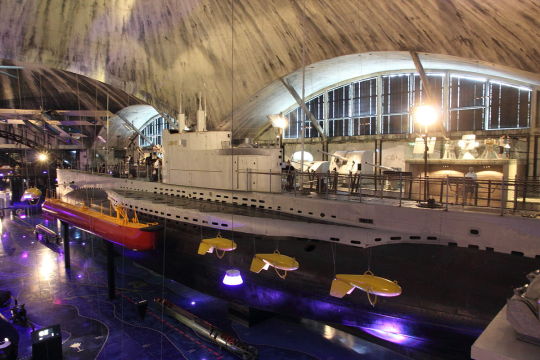


Lembit: a submarine like a pre-WW 2 time capsule
This post is a little different in various ways: it is about a military ship (stretching the definition of “infrastructure”), it touches on political history and most importantly, it is the first time I could visit the subject of a post myself and take some photos of my own. This was made possible due to an internship at the Estonian Maritime Museum (Eesti Meremuuseum) which allowed me to see one of the highlights of the museum for free, the submarine Lembit, wonderfully preserved and mostly restored to its original pre-WW 2 interior.
Until it was carefully lifted out of water in 2011 and turned into a museum ship in the Lennusadam (Seaplane Harbor) part of the Estonian Maritime Museum, it was the oldest submarine still afloat, having been custom-built in 1935-1936 in England and in 1937 taking part in the coronation naval parade of King George VI before being transferred in the same year to the Republic of Estonia to patrol its long coasts and train sailors. It is the only boat of its pre-WW 2 navy that remains intact, having survived WW 2 (unlike its sister ship Kalev, after which the this class of submarines are called Kalev class submarines) and the years of German and Soviet occupation during and the Soviet occupation after it. After the regaining of independence of Estonia in the early 90s and before becoming an exhibition object, during 1992-1994 it oversaw the departure of former Soviet troops that the occupiers had stationed in the country. (For more historical context, see the Wikipedia article on the history of Estonia)
Visiting the submarine is a bit like traveling back in time, aside from some modern lighting, a few loudspeakers and some protective glass the submarine is still largely how it was during its early years of service in the late 1930s, with most of the Soviet alterations (such as a training pool installed in it at one point) removed during restoration works in the 21st century. The new resting spot in the museum not only makes it possible to view the submarine from unusual angles that would usually require diving, but also protects the vessel against further corrosion.
Built by the Vickers-Armstrong Ltd. company in Britain by British workers and Estonian naval personnel under the (according to contemporary British statements) enthusiastic oversight of Estonian experts, the submarine has a number of special features. It was able to move through thin ice, which was needed due to large parts of the Baltic Sea regularly freezing over during the winter.
Furthermore, it could lay special mines designed in Estonia, possesses an anti-aircraft gun manufactured in Sweden as well as a machine gun, and, unusually, could fire two types of torpedoes, which were measuring 5.86/7 m (19.2/23 ft) in length and weighing 910/1565 kg. Eight could be on board in total, stored in the room at the bow (the front) of the ship, where also a majority of the personnel slept (16 out of 29-30, not counting officers).
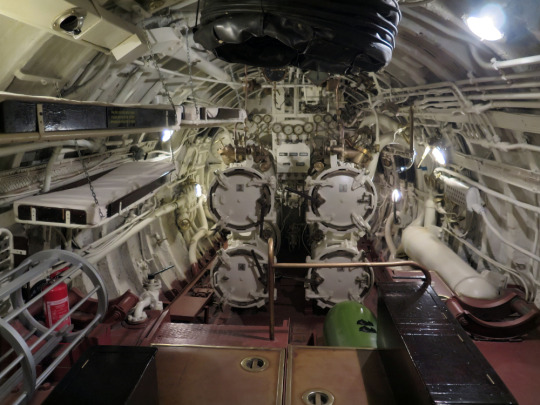
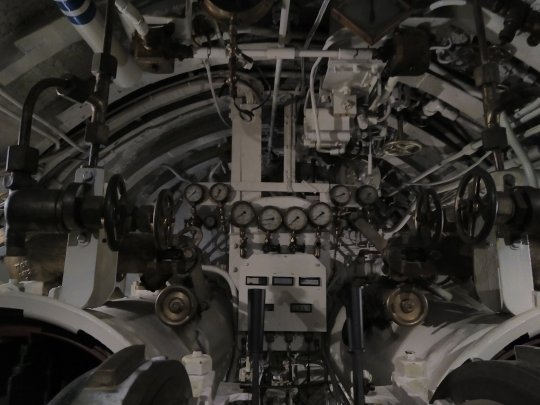
The ship itself is 59.5 m (195 ft 3 inch) long and could displace 665 tons of water when surfaced and 853 tons when submerged. Next to the torpedo room is the saloon of the officers with more comfortable beds with curtains, the captain’s cabin (the only one to have a dedicated cabin) as well as a table with chairs and a bathroom restricted to the four officers onboard.
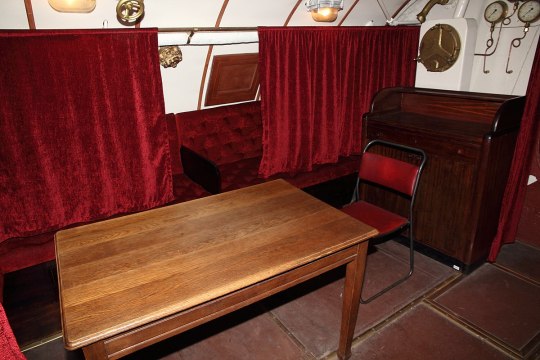
Neighboring the living room of the officer is the control room. It contains the steering wheel, a periscope, a desk with a map of the waters, the radio room, the galley (the kitchen) of the ship as well as numerous other devices and objects. Notable is that the water sink has two water taps, a sign that the ship was built in Britain.

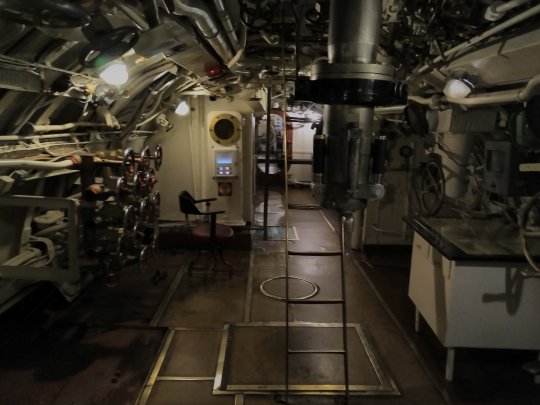
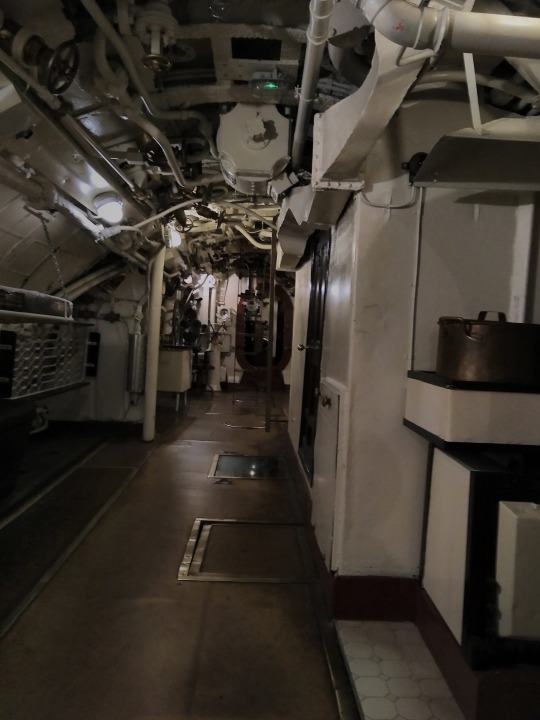
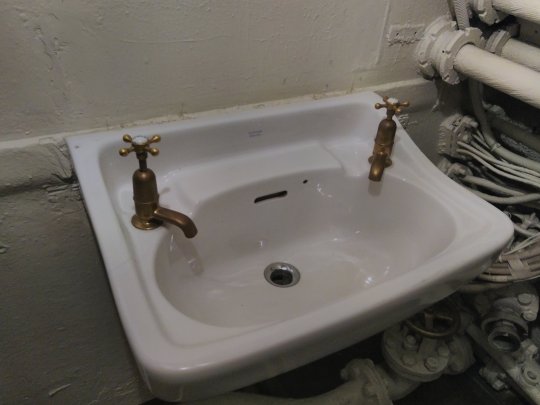
The two photos on the top show the control room seen coming from the bow, whereas the third photo shows the view coming from the opposite side, where the engine room is located. The submarine has two diesel and two electric engines onboard and could stay underwater for about a day at a maximum depth of 90 m (295 ft).
While surfaced, it could endure up to 28 days away from coasts or support ships and its range was 2,800 nautical miles (5185.6 km/3222.2 miles) surfaced and 90 nautical miles (166.7 km/103.6 miles) submerged. These lengths were however significantly reduced if going at maximum speed (8.5 knots / 15.7 km/h submerged and 13.7 knots / 25.4 km/h surfaced).
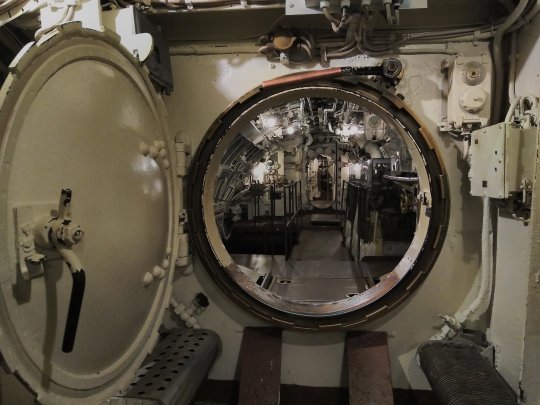

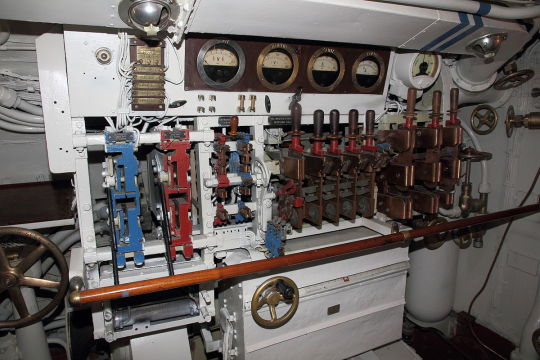

Topmost picture: The engine room, coming from the stern (the back) of the submarine. Second photo from top shows a similar view, here one of the electric engines is also clearly visible in the lower left corner. Second photo from the bottom: Controls of the electric engines. Bottommost photo: The diesel engines.
The last room had additional beds for sailors, additional devices and machinery as well as the toilet of the sailors and chests with their personal belongings.


Further reading:
Introduction on the homepage of the museum
Arto Oll: Allveelaevad Kalev ja Lembit / Submarines Kalev and Lembit (2019)
Arto Oll: Kalev ja Lembit. Eesti allveelaevade lugu (2017)
Uboat.net: Allied Warships of WW II, Lembit
Image sources:
Black/white photos: Unknown author, Public Domain, via Wikimedia Commons
Color photos: Photos released into the public domain by Wikimedia Commons user MKFI (interior photo of the museum, torpedo room overview, saloon, diesel engines and controls of the electric engines) and photos taken by the author.
2 notes
·
View notes
Text
Historic site of the week: The Seaplane Harbour
The Seaplane Harbour (Lennusadam) is one of the newest and one of the most exciting museums in Tallinn. It tells stories about the Estonian maritime and military history. The museum’s display, that comprises of more than a couple of hundred large exhibits, revitalizes the colourful history of Estonia.
0 notes
Text
Other than politics
Just in case you thought we were just doing politics and activism here, we also are doing lots of sightseeing. Regular tourist stuff. Here’s some photographic proof.

This shot is of St. Catherine’s Passage, which runs between Vene and Müürivahe streets. It’s a traditional place for artists to sell their wares. When we were strolling by yesterday (Thursday), it was not as crowded as it will be on the weekend.

Fat Margaret’s Tower. Yes, I had to photograph this. Construction of this impressive and thick tower began in 1511. It was built to defend Tallinn’s harbor and was later used to store gunpowder and weapons. Still later, it became a prison, where a mob of workers, soldiers and sailors murdered the prison guards during the revolutionary violence of 1917. The building now houses the Estonian Maritime Museum.

Completed in 1900, the Alexander Nevsky Cathedral is a reminder of the days when Tallinn and the rest of Estonia was ruled by the Russian Tsar. After independence, there were discussions about destroying the cathedral, but those plans did not move forward. The building is now rented to the Estonian Apostolic-Orthodox Church.
1 note
·
View note
Text
16 Things to See and Do in Tallinn, Estonia

Posted: 03/12/20 | March 12th, 2020
Tallinn, the capital of Estonia, is a medieval city nestled against the Baltic Sea. With its picturesque historic Old Town that dates back to the 13th century, it has been drawing in tourists since the fall of the Soviet Union.
Cheap flights, cheap prices, and the beauty of Prague without the crowds have made Tallinn an appealing weekend getaway for Europeans.
I visited the city on a trip from Finland — there’s a frequent ferry service between the two cities — and was enamored by it. It was a blend of Nordic and Baltic culture with plenty of things to see and do.
Best of all, it was super affordable!
Though the city has become a bit more crowded and expensive in the last couple of years, it’s still one of my favorite places in the region. It’s peaceful and wonderful: the people are open and relaxed and the country is super tech-forward (they offer e-residency services specifically for digital nomads).
To help you make the most out of your trip, here are the best things to see and do in Tallinn — from the super touristy to off the beaten trail!
1. Take a Free Walking Tour

One of the best things you can do when you arrive in a new city is to take a free walking tour. They’re a great way to learn about a destination and its history while taking in the main sights.
Not only will it give you a solid introduction to the city but you’ll get access to a local guide who can answer any and all questions you might have.
EstAdventures has a few different free tour options, including general walking tours, tours focused on the city’s communist past, and street art tours. Just make sure to tip your guide!
2. Estonian Maritime Museum
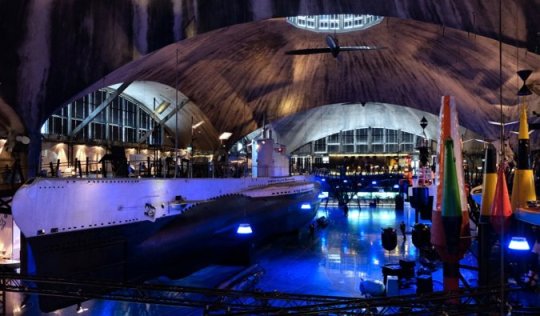
Founded in 1935 and located inside a historic 500-year-old building, this museum highlights the history of Estonia’s maritime culture. The main attraction is the interactive Seaplane Harbour exhibition, which includes a Short 184 seaplane as well as the steam-powered icebreaker Suur Toll.
And don’t miss the 1936 submarine Lembit, the only surviving Baltic warship from before WWII (and one of only two submarines in Estonian naval history). There’s also an aquarium, ship miniatures, and a flight simulator. It’s a fun and educational place for adults and kids alike.
Vesilennuki tee 6, +372 6200 550, meremuuseum.ee. Open Tuesday–Sunday 10am–6pm; closed Monday. Admission: 15 EUR.
3. Glehn Park & Castle
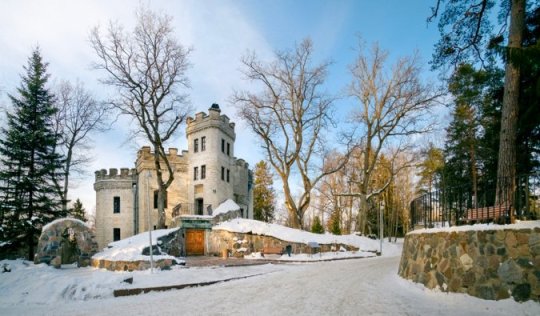
Glehn Park, located on the Nomme hillside, is home to medieval-style Glehn Castle. Built in 1886, both the park and castle were created by Nikolai von Glehn, a rich and eclectic man known for his unusual taste in decoration (such as tables and chairs carved like figurines, large statues, and an obelisk in front of his house marking the grave of his favorite horse).
Unfortunately, most of the castle was looted during World War I, so none of the unique pieces of furniture he created remain. However, you’ll still get to see the statues he built on the grounds of the park. There’s also an observatory tower and palm house, which has a gorgeous mosaic rooftop. It’s a good place to relax, go for a walk, or go skiing during wintertime.
Vana-Mustamäe 48, +372 652 5076, ttu.ee/organisatsioonid/glehni-loss. The building isn’t open to the public as it is now used for events (weddings, conferences, receptions, etc.).
4. Tallinn Town Hall & Square

Tallinn’s Gothic town hall is the oldest in the Baltics. Completed in 1404, it boasts a 64m spire topped with a weather vane of an old warrior (named Old Thomas), a Tallinn city guard and hero from the 16th century who fought in the Livonian War.
You can climb the spire to 34 meters (111 feet) from May through September. The interior of the Town Hall is open to visitors as a museum only during July and August; inside, you’ll get to see colorful designs on the walls, intricate wood carvings, and stunning arched ceilings as you learn about the city and its history.
The surrounding plaza is a great place to people-watch and it hosts lots of activities and markets throughout the year.
Don’t miss the annual five-day Tallinn Old Town Days festival held in May. It’s dedicated to the cultural heritage of Tallinn and includes themed days such as Medieval Day and Children’s Day, as well as numerous workshops, music, and theatre performances.
Raekoja plats, Kesklinna linnaosa (City Center), +372 645 7906, raekoda.tallinn.ee/. Open weekdays from 10am-4pm. Advance reservations required. Admission is 5 EUR.
5. Tallinn Museum of Photography
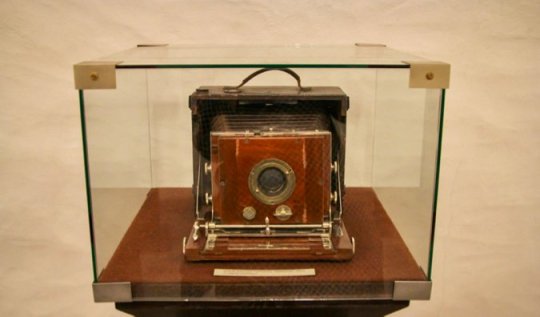
Hidden amidst the cobblestone streets of Tallinn, this small museum is tucked away inside a 14th-century prison. It focuses on Estonia’s history of photography with a permanent exhibition including antique photos and cameras from 1840 — when photography first made its way to Tallinn — to 1940.
You can also check out contemporary photography from modern-day artists in many of the museum’s rotating exhibits. It’s a very small museum, but super interesting even if you’re not a huge photography buff.
Raekoja 4/6, +372 644 8767, linnamuuseum.ee/fotomuuseum. Open Saturday, Wednesday, and Friday from 10am–5pm, Thursdays from 12–8pm, and Sunday from 11am–4pm. Closed Monday and Tuesday.
6. Estonian Open-Air Museum

Located 15 minutes from the city center by car, this open-air ethnographic museum recreates what life was like in Estonia’s rural countryside. It’s a life-sized rural village composed of farms, a wooden chapel, a school, fire station, shop, and an inn that highlights how families from different social classes lived during the 18th and 19th centuries.
There’s plenty to do, from eating a traditional Estonian meal to riding a horse to taking a workshop. It’s open all year round, but you might want to go during the summertime when it’s warm! It’s also one of the best things to do in Tallinn with kids. Download the mobile app Numu for a free audio guide while you’re at the museum.
Vabaõhumuuseumi tee 12, +372 654 9100, evm.ee/est/avaleht.Open daily from 10am–5pm. Admission is 8 EUR. Free entrance with a Tallinn Card.
7. Ichthus Art Gallery
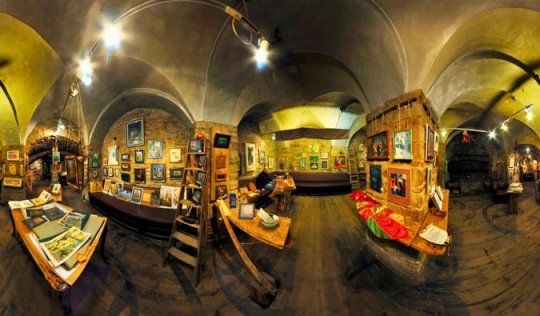
This is one of Tallinn’s best-kept secrets. It’s tucked away in the depths of St. Catherine’s Dominican Monastery, which dates back to 1246. On arrival, turn right toward steep steps that take you into the cellar. The confined space used to contain three wings, called the Claustrum, that housed monks in the 13th century.
Today, the space is used by artist Aleksandr Savchenkov, who sells his original artwork from the cellar. As you wander about you’ll also see the ‘Energy Pillar’, which is located in the ancient monastic chambers and is said to be a source of spiritual well-being.
Müürivahe Tänav 33, +372 5559 5920. Admission is free; however, donations are accepted.
8. Epitaphs of the Cathedral of Saint Mary

The grounds of this church date back to the 13th century, though the current building itself is from the 17th. What makes it unlike most other churches is that coats-of-arms epitaphs hang on the walls of the church instead of more traditional religious artwork or decorations.
Historically, these were used as headstones for people of importance, such as nobles and knights. They reflect the people of status who were buried on the grounds.
In fact, the first man who ever led a Russian voyage around the world, Admiral Adam Johan von Krusenstern, is buried here. Climb the 69-meter (226-foot) bell tower to get a beautiful view of the city.
Toom-Koolitänav 6, +372 644 4140. Open Tuesday–Sunday 10am–3:30pm, closed Mondays. Admission is 5 EUR for adults and 3 EUR for children. Dress respectfully as this is a place of worship.
9. Estonian Architecture Museum
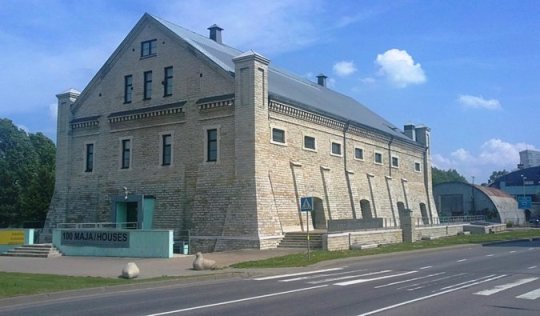
The Estonian Architecture Museum was established in 1991 during the fight for Estonian independence. The museum is located in the Rotermann Salt Storage building, which was built in 1908 (and then reconstructed in 1995 with multiple additional floors for the museum).
Its galleries now feature drawings from the 1920s, as well as over 11,500 archived items (such as drawings and sketches) and some 18,000 items in their photo collection. There are always some interesting rotating exhibits here too.
Ahtri tänav 2, +372 625 7000, arhitektuurimuuseum.ee. Open Tuesday–Sunday 11am–6pm, closed Mondays. Admission is 6 EUR.
10. TV Tower
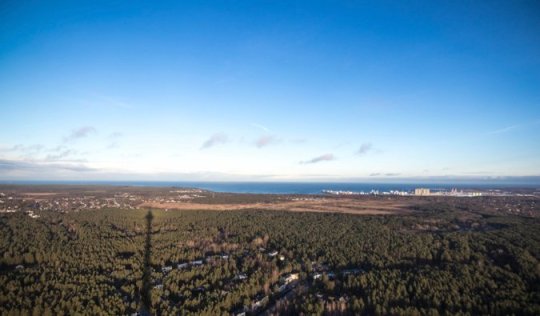
Adrenaline junkies will get a kick out of visiting the TV Tower. Not only will you have an incredible bird’s-eye view of Tallinn from the top, which stands 314 meters (1,030 feet) tall, but you can also try the Walk on the Edge experience. Hop into a harness and step outside of the tower onto the exposed deck. It’s the highest open deck in Northern Europe and offers both an amazing view and a huge rush!
The TV Tower was constructed when Tallinn was chosen as a host city for sailing during the 1980 Moscow Olympics. It closed in 2007 for renovations and reopened in 2012. It has floor-to-ceiling windows (not ideal if you’re afraid of heights) so you can really soak in the view as well as touch-screen information panels so you can learn about the tower and the city.
The tower hosts many events, such as music concerts and the annual Stair Run to mark the anniversary of its reopening.
Kloostrimetsa tee 58 A, +372 686 3005, teletorn.ee. Admission is 13 EUR and the Walk on the Edge costs 30 EUR.
11. Telliskivi Creative City
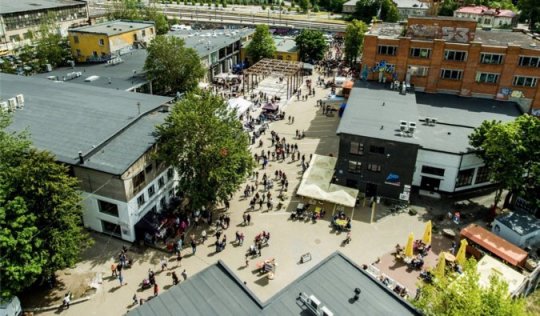
The Telliskivi Creative City is a workplace for over a thousand people, with artist’s studios, a radio station, rehearsal spaces, and NGO offices, all situated throughout ten repurposed factory buildings. Telleskivi hosts a flea market every Saturday, and there are over 600 cultural events throughout the year, including dance performances, music concerts, and improv theatre.
There are colorful murals on many of the buildings and you’ll also find restaurants and bars full of locals and tourists alike. Make sure you eat at Peatus (“Stop” in Estonian) for a really unique experience: it’s located inside two old Soviet railcars (and the food is great too!).
Telliskivi tänav 60a, Pohja, Tallinna linnaosa.
12. Bastion Tunnels
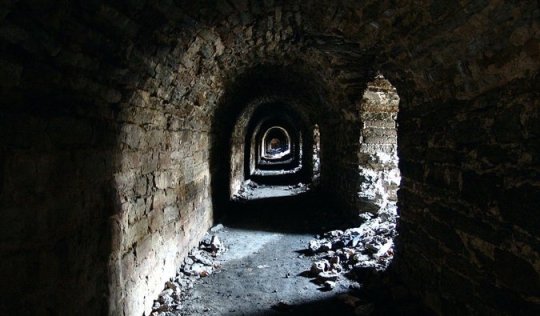
These tunnels were initially built in the 17th century as an addition to the Kiek in de Kök (Peek in the Kitchen) tower, and were intended for storage. They later held prisoners and then were used as shelters against air raids during World War II.
In more modern history, thieves and rebels used them for shelter since the police usually avoided the tunnels. They were cleaned out and opened up to the public in 2004. If you’re brave enough, you can explore the winding maze of the dark, damp tunnels on a guided tour when you visit the tower.
Komandandi tee 2, +372 644 6686, linnamuuseum.ee/kiek-de-kok. Open Tuesday–Sunday 10am–5pm (Thursday until 8pm), closed Monday. Admission is 14 EUR.
13. Toompea Castle & Alexander Nevsky Cathedral

Toompea Castle dates all the way back to the 9th century and is currently used by Riigikogu, Estonia’s Parliament. The east wing has a brightly colored pink and white exterior in baroque style, as ordered by Empress Catherine the Great in 1773. The opposing side still has its medieval stone exterior. The Estonian flag is raised above the tower at sunrise every day.
You can also visit the nearby Alexander Nevsky Cathedral. It opened in 1900 during the Czarist Empire and is home to Tallinn’s largest bell (it weighs 15 tons). The impressive exterior showcases Russian Revival architecture with its onion-shaped dome. The interior is decorated with colorful mosaics and stained-glass windows and has three ornate altars.
Toompea Castle: Lossi plats 1a, +372 631 633, riigikogu.ee. On Thursdays at 11am, there’s a 45-minute English-language tour of the castle. Admissions is free though you need to reserve your spot in advance.
Alexander Nevsky Cathedral: Lossi plats 10, +372 644 3484, cathedral.bg/en/home. Open daily from 7am-7pm. Admission is free. Dress respectfully as it is a place of worship.
14. Soviet Statue Graveyard

The Soviet Statue Graveyard, located near Maarjamäe Castle, contains a collection of discarded statues, such as those of Joseph Stalin, Vladimir Lenin, and Mikhail Kalinin. After the Soviets left Tallinn, they were dumped here and ignored.
You’ll find large statues of heads (a classic Soviet statue trend) and others that tower over three meters (ten feet) tall. It’s a surreal place to visit — especially when you realize it hasn’t even been 30 years since Estonia achieved independence and these statues were left to fade into history.
Pirita tee 56, 10127, ajaloomuuseum.ee/exhibitions/permanent-exhibitions/noukogude-aegsete-monumentide-valinaitus. Open Tuesday–Sunday 10am–6pm, closed Monday.
15. KGB Museum

Rooms previously used by spies during the Soviet era sit on the top floor of the stylish Hotel Viru, located on Viru Square. They house listening and recording equipment (some cleverly disguised), dial telephones, uniforms, and a typewriter.
Few people ever knew these rooms existed, and they were only exposed in the 1990s when the KGB fled the city. They shed light on just how controlling and subversive the Soviet government was during the occupation.
Viru väljak 4, +372 680 9300, viru.ee/en. Open daily from 10am–5pm. The guided tour begins in the hotel lobby.
16. Take in the View

For the best view in the city, head to Kohtuotsa viewing platform. It’s on Toompea Hill and offers the best view of the city and harbor. You’ll also often find buskers here, making it a nice place to end your day and watch the sunset.
***
Tallinn remains one of my favorite destinations in Europe. It’s a fun and lively city home to quirky museums, hidden art exhibits, and beautiful architecture.
Go enjoy all the wonderful things to do here.
Book Your Trip to Estonia: Logistical Tips and Tricks
Book Your Flight Find a cheap flight by using Skyscanner or Momondo. They are my two favorite search engines because they search websites and airlines around the globe so you always know no stone is left unturned.
Book Your Accommodation You can book your hostel with Hostelworld. If you want to stay elsewhere, use Booking.com as they consistently return the cheapest rates for guesthouses and cheap hotels. My favorite hostel in the city is:
Tallinn Backpackers – This is a lively, social hostel that makes it easy to meet people since they have a pub crawl every night. The staff are great too!
Don’t Forget Travel Insurance Travel insurance will protect you against illness, injury, theft, and cancellations. It’s comprehensive protection in case anything goes wrong. I never go on a trip without it as I’ve had to use it many times in the past. I’ve been using World Nomads for ten years. My favorite companies that offer the best service and value are:
World Nomads (for everyone below 70)
Insure My Trip (for those over 70)
Looking for the best companies to save money with? Check out my resource page for the best companies to use when you travel! I list all the ones I use to save money when I travel – and I think will help you too!
Photo credit: 3 – Vladimir Varfolomeev, 4 – Holger Vaga, 5 – Pudelek, 6, 7 – Sander Säde, 8, 9 – Zairon, 10 – Nosser, 11 – Sheila Dee, 12 – Relkmsaiia, 13 – Narva69, 14 -Diego Delso, 15 – Ferran Cornella, 16, 17 – PIERRE ANDRE LECLERCQ
The post 16 Things to See and Do in Tallinn, Estonia appeared first on Nomadic Matt's Travel Site.
from Nomadic Matt's Travel Site https://ift.tt/2IJaqRA via IFTTT
0 notes
Text
What to see in Tallinn in 1, 2, 3 days
New Post has been published on https://tripsterguru.com/what-to-see-in-tallinn-in-1-2-3-days/
What to see in Tallinn in 1, 2, 3 days
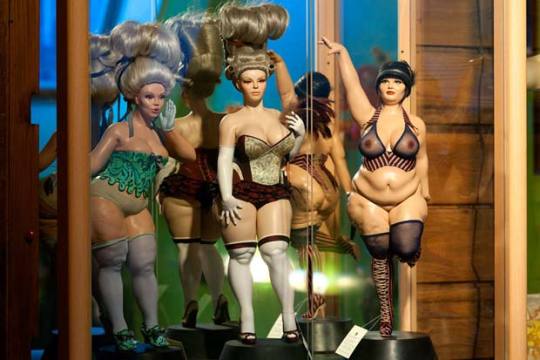
The capital of Estonia – a kind of oasis of the Middle Ages, has always been and remains a desirable place for filming many feature films about the past. It is the particular flavor of Tallinn (former Revel) with its architectural and cultural monuments, with narrow cobbled streets that conveys the atmosphere of past eras, ancient tales. The combination of nostalgically sweet patriarchalism with vibrant modernity makes visiting Tallinn extraordinarily interesting. We will tell you what to see in Tallinn in 1, 2 and 3 days. Also, we marked all the interesting places on the map.
What to see in 1 day
The Dome Cathedral
Dome Cathedral – the oldest temple in Tallinn (1229) – a visiting card of the city, a world-famous religious building dedicated to the Holy Virgin Mary. It contains the burial places of great personalities, knights and eminent nobles, as evidenced by tombstones and sarcophagi (107), which are works of sculpture art of their time. A special atmosphere reigns here, imbued with the high spirituality created by Saturday concerts of organ music.
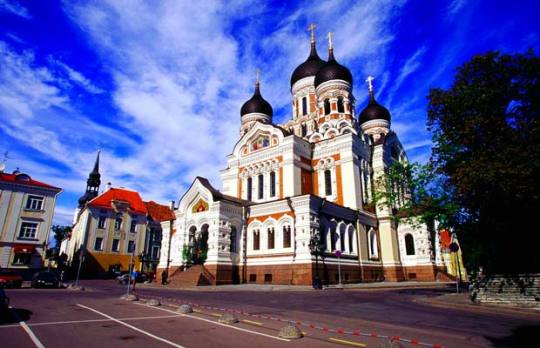
Church of Olevist (St. Olav)
Church of Olevist, considered until the 19th century. the tallest building in the world, built in the 13th century. This is one of the main symbols of the city, famous for its unsurpassed spire (124 m), makes an amazing impression.

Address: Lai, 50. Open to all comers – pon. – Sun, 11.00-17.00.
Admission: adult – 1.5 €, children – 0.6 €.
Tallinn city wall
This is a unique monument of medieval fortifications, with many watchtowers. Colossal buildings – evidence of reliable protection from enemies, a symbol of the tremendous work of their creators, are impressive to the core. In the tower “Fat Margarita” is the Maritime Museum with interesting exhibits.

Open for guests and residents of the city – Wed-Sun, 10.00-18.00. Tickets: Adult – 3,20 €; children – 1,6 €; Seventh – 5.11 €.
Toompea Castle
Toompea Castle is an ensemble of ancient buildings, with a unique Long Herman tower. For many centuries, the authorities located in the castle complex, and now the country’s parliament is located.

Address: Lossi plats, 1. Excursions – Mon-Fri, 10.00-16.00. The price is 8 euros.
Kadriorg Palace
The Kadriorg Palace, built under Peter I as a gift to the Empress wife, was a royal residence until the 1917 revolution. The magnificent Baroque building is surrounded by a park whose landscape beauty strikes with the beauty and perfection of the lines. Now the palace has a rich collection of foreign art.

Address: A. Weizenberqi 37.
Opening hours: Thu – Sun, 10 a.m. – 5 p.m. Ticket Price: 5 Euro
What to see in 2 days
For 2 days there is an opportunity to see a number of other, no less interesting, objects shrouded in romance.
Viru Gate
The Viru Gate is a symbolic “door” to the Old City, a once-powerful entrance building with thick walls and towers, erected in the 14th century. The initial view of the gate has been lost, only 2 towers and the wall of the small entrance, from which excursions in medieval Tallinn begin, remain. But even the remains of the ancient gate are very impressive.

Katarina Kain
Katarina Kain (Katarina Lane) is also called the Courtyard of the Masters because of the various workshops in it for the manufacture of glass, leather and ceramic souvenirs. At first, the lane was named after the church of St. Katarina, built 7 centuries ago. Here the spirit of the true Middle Ages reigns, thanks to the ancient monastery and the same houses located in a row. A lane tour is an exciting journey into the past and present.

Dollhouse
Dollhouse – a museum of author’s dolls, opened in the Old Town in 2010, began with the organization of an international doll exhibition in Tallinn. The purpose of its discovery is not only the popularization of the art of making dolls, but also a charity event. Famous people of Estonia began to create dolls, learning from experienced craftsmen, and selling exclusive samples at auctions. It regularly hosts exhibitions and workshops where you can see real puppet masterpieces.
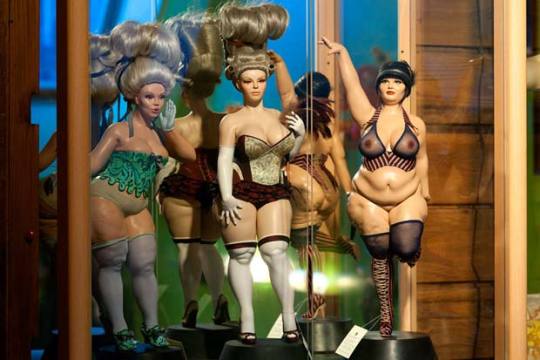
Address: st. Vienna, 12 / 1B. Open for visitors: Tue-Sun, 11.00-18.00.
Entrance Price: Adult – 5 €, student – 4,5 €, free – children under 3 years old.
What to see in 3 days
A three-day stay in Tallinn is a happy opportunity to see the most significant historical and architectural monuments of world significance.
Town Hall
The Town Hall, whose Gothic building was erected 600 years ago, is the only well-preserved instance of such structures in Northern Europe. Each century added new elements, and as a result, an architectural masterpiece appeared, with a high spire topped with a unique weather vane in the form of an Old Thomas figurine. Skillful Revel craftsmen decorated the town hall with copper forged weirs – the heads of dragons. You can climb up from the basement on the stairs (115 steps) to the tower and from there, from a 64-meter height, you can see the amazing panorama of the city.

Address: Town Hall Square, 1. Tour of the tower – from 27. 06 to 31. 08, Mon-Sat – 10.00-16.00. Admission Price – Adult – 4 €, children – 2
Dominican monastery
The Dominican Monastery is the oldest Catholic monastery in Europe, founded by St. Dominic in honor of St. Catherine (13th century). The sacred remains of the monastery buildings, the garden, the chapel, the ruins of the church, the barn located in the Lower City, now serve as a museum. The works of stone-cutters from medieval Tallinn, monastic household items, symbols of spirituality and other exhibits are stored here. In summer, various concerts and theatrical performances are organized in the courtyard. A visit to the monastery is a touch of the mysterious past.
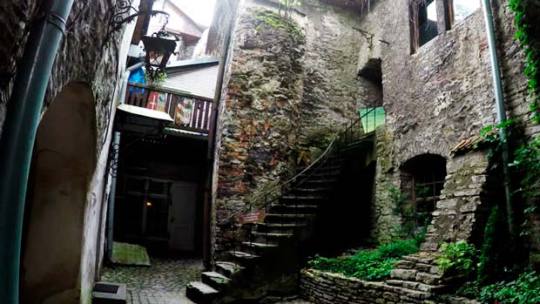
Great Guild
The Big Guild is a 15th-century building with a Gothic portal, massive doors and lancet window openings, built by Tallinn merchants. Trade meetings, lush festivities, sumptuous feasts were held here, the scope of which amazes with the amount of food eaten and drunk (according to archival data). Visiting the Great Guild, in which the Historical Museum is now located, you can learn a lot of interesting things about the merchants, trade, cultural, and family traditions of Estonians. The expositions of the new exhibition “11 thousand years of Estonian history” tell about this.

Address: st. Pikk, 17.
Open: May-September – Mon-Fri, 10.00-18.00; Oct-Apr – Thu.-Tue. -10.00-18.00. Tickets: 5 €, preferential – 3 €.
#Church of Olevist (St. Olav)#Dollhouse#Dominican monastery Tallin#Kadriorg Palace#Katarina Kain#Tallinn city wall#The Dome Cathedral#Toompea Castle#Town Hall Tallin#Viru Gate
1 note
·
View note
Photo
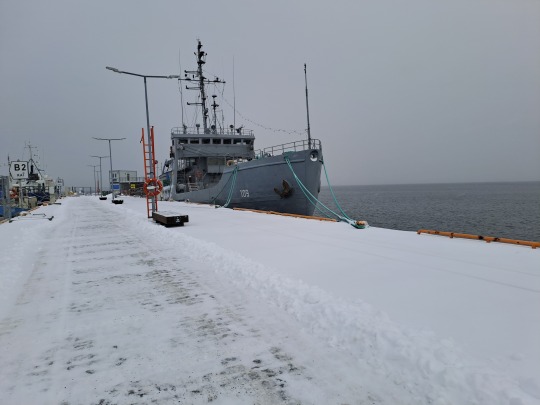
Now, Estonian Border Guard ship PVL-109 Valvas belongs to Estonian Maritime Museum, Lennusadam harbor, Tallinn, Estonia, 2022, December 6, 2022. Photo by D.P.
P.S. Quote: /The ship was built in Minnesota by the Zenith Dredge Company of Duluth. During WW II the vessel was mainly stationed in Alaska (homeport Kodiak). Her primary duty was to service the navigational aids, but she also saw service in various search and rescue operations. She could also be used as an icebreaker. Many estonian sailors who were stationed on soviet fishing ships remembered Bittersweet while sailing near the George Brown fishing territory in Alaska. Kodiak remained the ships homeport until 1964, from 1964-1976 USCGC Bittersweet was stationed in Ketchikan and later on Woods Hole, Massachusetts. The ship was fully renovated in 1976-1978 and again in 1991.It is worthy of mentioning that in 1990 the ship aided the passanger ship Regent Star. The aforementioned ship struck the lowlands and because of that Bittersweet rescued some 882 people. On the same year Bittersweet also assisted the rescue of 682 people from the passanger ship Bermuda Star(..) Source: museumships.us
#Estonia#PVL-109 Valvas#ship#original photography on tumblr#Estonian Border Guard#road trip#Tallinn#Lennusadam harbor#estonian maritime museum#museum#Baltic States#Northern Europe#USA#Allies#NATO#USCGC Bittersweet#Baltic Sea#Alaska#WWII
4 notes
·
View notes
Photo

A few more pics from the Estonian maritime museum / restaurant. 🇪🇪 (at Estonian Maritime Museum) https://www.instagram.com/p/By3-9Y6FKNz/?igshid=nos83oygb47z
0 notes
Text
Photoreview of the Seaplane Harbour, Estonian Maritime Museum in Tallinn
Lennusadam is a hydroelectric airport in Tallinn on the shores of the Gulf of Tallinn, it is a unique reinforced concrete hangar for seaplanes. Inside, visitors can visit a cinema hall, see an aquarium, as well as some yachts, boats, coastal defense weapons and more.
The museum has an interactive zone for kids, which includes simulators of hydroplanes and submarines. Part of the exposition is presented in the open air on the pier behind the museum. Temporary exhibits are also regularly housed in the Seaplane Harbour.
http://www.familywithkids.com/en/estonia/photogallery/photo-review-seaplane-harbour-estonian-maritime-museum-tallinn



16 notes
·
View notes
Text
Tallinn, Estonia
Third and final stop in the Baltics: Tallinn, Estonia
Monday
I arrived Monday evening to Old Town Alur Hostel. They have a connection with the hostel next door, so I headed over there for the tail end of trivia night. While it was mostly wrapping up, I ended up meeting this German woman, Iris and my friend Marcus from Riga and chatting with them over a beer for a while outside.
Tuesday
I did the Free Walking Tour and then went Põhjala Brewery, where a friend of a friend works. This girl that works there, Hannah worked in Chicago with a girl I used to work with at the Bellemore. Hannah was great at giving me advice from an American and pastry work point of view. I had a few drinks at the bar and she sent me out some of the food. After a couple hours there, these 50-year-old men two seats down from me move over and tell me they have seen me texting people and they think I'm listening to their conversation (in Estonian) and sharing their secrets with the Russians. After a bit of back and forth, and them wanting to take my phone and scan it for proof that I'm not a Russian spy, the bartender interrupts and tells them to leave me alone. Later, when Hannah comes by again, the guys come by again and still think I'm a spy, and again the bartender has to tell them to back off. Apparently, they are their first customers, but they were also completely concerned that being so close to Russia, I could be a spy. Anyway, then this girl on the other side of me and I start talking. She's from Michigan and here traveling alone before meeting up with a friend and then a week of work in Germany. After we finished our drinks, we left in search of more food but everything was closed so we got another beer near her hotel.
Wednesday
I started my day at Linnahall, the now abandon Sailing Center from the 1980 Moscow Summer Olympics (boycotted by the USA). Then I went over to the prison, which now houses a museum, but I skipped the museum and just searched for the original Banksy artwork on the outer wall of the building. Then I went to the Maritime Museum. Again, I skipped going inside and just walked around to the back, where I was able to go on an icebreaker boat and see everything from the cabins to the engine room. Then I met up with Jenelle, the American from the bar for lunch. We ate at this place called Rock, Paper, Scissors near the creative city. Then we walked around all the graffitied walls and then this huge indoor market with clothes and food. I went back to the hostel for a nap and then walked around the old town for a bit and found this quirky cafe with chocolate cake. In the evening I hung out at the "sister hostel", played some pictionary and met this cool Kiwi couple living in a van and limiting their single-use plastic items.
Thursday
After spending all morning trying to do things and then finding out they were closed, I went back to the hostel to do some more research. Then I went out to the Kiek in da Kök museum, which allows you to go up into one of the old towers and into the secret tunnels underground. Then I went to Kompressor, which was a pancake place that was highly recommended by my friend Marcus. From there I met up with a couple couchsurfers to discuss a plan for the next day on getting to Lahemaa National Park. I bought a couple postcards and was super ready to relax the rest of the day in the hostel when I started talking to this girl, Maryann. Next thing I knew, about five hours went by. We went out to the grocery store for food and came back to some other girls in the common area and started talking to them. Then it's midnight, and I'm suppose to be getting up early for this hike tomorrow. I mentioned that I'm going to bed and if anyone wants to go on this hike, as were renting a car and have space, and the two girls traveling together say ok! Then we all go to bed.
Friday
I get up pretty early and it's pouring rain. But I meet the other girls in their hostel room and wait for Manu to tell us he's on his way back from the airport with the rental car. We end up waiting for a while, both at the hostel and then in our meeting spot where we join with Vanessa. Finally, Manu arrives just after 10:15, a good 45 min after our planned meeting time. We drive about an hour to Lahemaa National Park and the while the weather is no longer rainy, it's chilly. We hike the 15km around the peninsula. The track had everything from sandy beach, rocks, to typical forest pathways, so it was very diverse. We even walked through this little fishing village of Kusmö. After about 4.5 hours of walking (and a short break for a snack at the point) we loaded back in the car. Manu had planned some stops for the way back. The first was the bog. It was massive. There was a boardwalk that was 2.5km just to get across the boardwalk. We only walked about 1km to the watchtower to take some pictures. Then we went to this old monument that looked like Rapunzel could have lived inside of. Again we took pictures and headed to the waterfall. We spent about 15 minutes there and finally went back to the hostel. It was a crazy long day and I did over 17 miles of walking, or 41,000 steps. I was exhausted and leaving early in the morning for Helsinki so I chatted with Maryann again for a bit, finally wrote my postcards, and then slept about four hours before heading off my ferry ride to Finland.
0 notes
Text
How To Spend A Weekend in Tallinn
So, you’ve closed your eyes, twirled your hand in the air and smacked your index finger on the map. Opening your eyes, you see that your next big city adventure will take place in Tallinn, Estonia.
What can I say to that? Well – welcome! Let me show you around. You’ll love it here!
First Impressions of Tallinn
The first thing you’ll see when you land in Tallinn is that our airport is one of the cosiest if not ‘the’ cosiest in the world. You will find a library, a wine bar, lots of awesome looking gates and my favorite Café Kohver from there. Tallinn Airport is one of those where you should arrive early. Not because of the queues but you’ll genuinely enjoy spending time here.
After a taxi ride to the city center, you’ll find yourself in the heart of a medieval fairy tale. And since in this story you have only three days to spend exploring, shopping, eating and drinking, it’s time to get going!
Places to sleep
First, you’ll need a place to rest your weary head. The city center is full of hotels, some good, some bad, some really bad (and that isn’t good). My suggestion is that when you’re there for only a couple of nights, then you should stay somewhere in the Old Town.
A good hotel with an excellent restaurant is located just off the main street and is called CRU Hotel. The restaurant on the ground floor will first seduce you with its atmosphere and then with the food.
You’ll truly feel like you’ve just stepped back in time or into a medieval movie set. The fifteenth-century building has a soul that will lull you to sleep at night and make you dream of sunshine and rainbows.
Or if you’re more of an Airbnb kind of traveler then there are many options right off the main street. I have a feeling you’ll never want to leave that place.
Explore-explore-explore
As you’re probably staying in the Old Town, then you’ve already seen it. And by ‘it’ I mean one of the best preserved medieval towns in Europe. I’ll be honest and say that I just run through it mostly, but I am planning on taking a day just to wander around and act like a tourist.
If you’re lucky to visit our little country during summer, then a visit to the Estonian Open Air Museum is a must! Staying in the old town, you’re walking in the footsteps of merchants and aristocrats. At the Open Air Museum, however, you’ll get a glimpse of how the simple people used to live. It’s really fascinating and will keep you entertained for hours!
On the other side of town, you’ll stumble across the CN Tower of Estonia also known as Tallinna Teletorn. The highest building in Estonia played an important role in the restoration of our independence, and the newly renovated museum will give you a good overview of what went down. Besides enjoying some of the best views, you can also take the bull by its horns and try a cool attraction – the Edgewalk.
Now that you’ve seen our beautiful land from high up and explored the simple dwellings of ancient Estonians, it’s time to dive deeper. The Estonian Maritime Museum is one of a kind for sure. Walking into a huge hall, I’m sure that the first thing you’ll see is the massive floating submarine. Yes, there’s a life-size 1930’s submarine named Lembit dangling from the ceiling. You just have to see it to believe it.
Eat. Drink. And Repeat
If there’s another thing besides Wi-Fi that we have plenty of, it’s restaurants. Tallinn’s restaurant scene has gone on steroids in the last few years. There are new cafés, restaurants, and fast food joints popping up like mushrooms after some rain.
If you’re like me and don’t function without coffee, then head over to Reval Café. It’s a café chain that has little coffee shops all over town. My favorite is the one on Müürivahe Street. Maybe it’s because I used to frequent it a lot when I worked just across the street from them or maybe it’s the interior. They have a wide selection of sweets to go with that good ol’ cup of joe too!
For lunch, I’d suggest heading to Hell – literally. Across the street from the St. Nicholas’ Church, is a bar called Põrgu (Hell in Estonian). It’s located in a basement, and you have to do a fair bit of balancing to get down the old steps, but I assure you it’s worth it. Põrgu’s borscht soup will make you shimmy in your chair because it’s just that good! And if you’re into beer then their selection will make you get out of that chair and twirl from happiness.
When night falls, and your stomach starts rumbling again – that’s when it gets tough. There are so many great places in Tallinn that it’s going to be hard to pick.
My absolute favorite restaurant in Tallinn is Leib Resto ja Aed. It’s located on the outskirts of Old Town and is so simple that it’s brilliant. I have never been disappointed in their food, service or anything else for that matter. I feel like hugging them every time it’s time to leave because it feels like a dinner party at a friend’s place.
These are only a few locations in this beautiful capital of ours. There is so much more to do in the city and out of it. But as you have only three days then I guess you have to come back. Then I’ll take you to my favorite places all over Estonia.
Until then – toodles!
The post How To Spend A Weekend in Tallinn appeared first on Tripstations.
from Tripstations https://ift.tt/2ZfzIxa via IFTTT
0 notes
Video
vimeo
In tight collaboration with Estonian Maritime Museum, we developed a concept an Augmented Reality application for using at exhibitions and for visitors to enjoy. Read more: http://bit.ly/2WjK3WN
0 notes